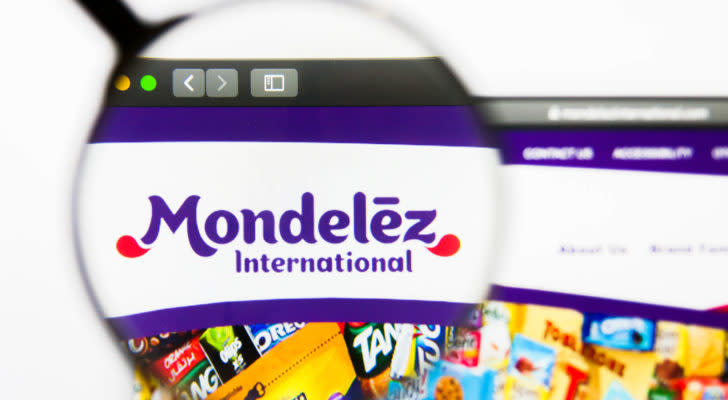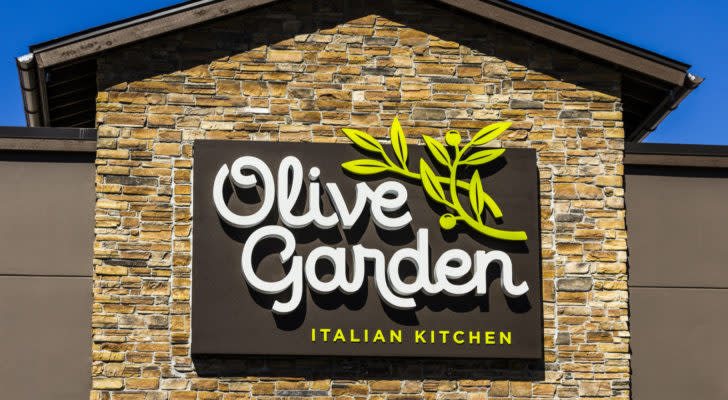4 Dividend Stocks to Buy for February 2023
It’s February, and Valentine’s Day is on everyone’s mind. People bought candy, cards, flowers, jewelry and clothing and ate out at restaurants. The National Retail Federation estimated that consumers would spend $25.9 billion on Valentine’s Day. As a result, companies providing these products and services can make suitable investments. Moreover, they often have market leadership and scale because of industry consolidation. Consequently, they return prodigious amounts of cash to investors through dividends and share buybacks.
This article examines four dividend stocks for February 2023, emphasizing companies with higher sales during Valentine’s Day. Also, we require market leadership and solid dividend safety. Finally, we exclude privately held companies, like Hallmark.
InvestorPlace - Stock Market News, Stock Advice & Trading Tips
Hershey (HSY)

Source: shutterstock.com/VG Foto
Hershey (NYSE:HSY) is the quintessential Valentine’s Day stock. The firm sells candy and snacks globally, with well-known leading brands. It sells about 100 brands, including Hershey, Kit Kat, Reese’s, Jolly Rancher, Kisses, Pirate’s Booty, Skinny Pop and more. Besides Valentine’s Day, the firm has higher volumes around Halloween, Easter and special events. The Milton Hershey School Trust controls the company, with roughly 80% of the voting power, but owns about 29% of the shares.
Hershey’s competitive advantages are its market leadership, scale, brands, and research and development (R&D). The firm has about 46% of the domestic chocolate market and 32% of the confectionary space, making it the market leader and one of the largest candy companies. Its scale and size result in manufacturing, distribution and marketing cost efficiencies. Next, the firm invests continuously in its brands to maintain this leadership.
The company’s near-term challenges are inflation for labor, freight, and inputs and supply chain constraints. Hershey is dealing with these headwinds through price increases and cost cuts. But still, margins are down.
Despite the near-term challenges, Hershey is an excellent dividend growth stock to own. The forward dividend yield is about 2.1%. The company is a Dividend Contender, with a 14-year streak of increases. The compound annual growth rate (CAGR) has been nearly 10% over the past decade. Moreover, the dividend safety is excellent, with a divided quality grade of A+ and a moderate payout ratio of about 45%.
A negative is Hershey’s valuation. It is trading at a valuation of 25.4 times forward earnings. But Hershey is worth looking at for long-term investors seeking dividend safety and growth.
Tootsie Roll (TR)

Source: Nataliia Pyzhova/ShutterStock.com
Tootsie Roll Industries (NYSE:TR) is another candy company benefitting from Valentine’s Day and special events. The company is smaller than Hershey’s but is no less well-known. Its famous brands include Tootsie Roll, Tootsie Pops, Charms, Junior Mints and Dubble Bubble. The company is controlled by Chairwoman and CEO Ellen Gordan, who owns approximately 57.1% of common stock and 84.5% of Class B shares.
The firm’s competitive advantage is the brand strength of its primary product, the Tootsie Roll, which lacks direct competition and is unique. Some of the other brands are also well-known to consumers. The firm also benefits from a fortress balance sheet with a net cash position.
The company struggled with lower sales in 2020 during the worst months of the Covid-19 pandemic. But it rebounded in 2022 as social gatherings and other events resumed and demand surged. Inflation is another concern with high freight, labor, storage, packaging and fuel costs. As a result, the company is raising prices, but margins and net profits have been impacted.
Tootsie Roll pays a regular cash dividend and a 3% stock dividend annually, giving it an effective dividend yield of nearly 4%. Thus, some investors consider Tootsie Roll a Dividend King.
One detraction is that Tootsie Roll trades at a price-to-earnings (P/E) ratio well above its long-term average. Recent good performance combined with limited float makes the stock expensive. But Tootsie Roll is worth tracking.
Mondelez International (MDLZ)

Source: Shutterstock
Mondelez International (NASDAQ:MDLZ) is another chocolate, confectionery and snacking company but with more global exposure. The company was formed through acquisitions and divestments of the original Kraft Foods. Today, Mondelez sells brands like Cadbury, Milka, Toblerone, Oreo, Chips Ahoy and so on. The firm derives 32% of its sales from chocolate and 10% from gum and candy, making Valentine’s Day and special events a vital demand driver. Besides chocolate and candy, Mondelez is the global market leader in biscuits and cookies.
The firm’s competitive advantages are its size, market leadership, brands and growth strategy. Mondelez’s size gives it cost efficiencies for marketing, distribution, and marketing. Notably, the firm is even bigger than Hershey in terms of revenue. Globally, it is No. 2 in chocolate and No. 3 in candy. The company has a significant presence in Europe, Latin America and Asia, especially for its chocolate and candy brands. Many of its local brands are No. 1 or No. 2 in the country or region. For example, Cadbury Dairy Milk is the market leader in the U.K., India, Australia and Ireland.
Mondelez is facing similar difficulties as Hershey and Tootsie Roll. High global inflation is causing input costs to rise. Labor, freight, distribution and so on are all priced higher than before the pandemic.
That said, Mondelez is an excellent dividend growth stock with 10 years of increases, making it a Dividend Contender. The five-year dividend growth rate is 12%-plus. Additionally, the dividend safety is solid, with a modest payout ratio of 50% and an A dividend quality grade. The forward dividend yield is almost 2.4%, more than the five-year average.
Mondelez is undervalued now, with a P/E ratio of about 20.8x, below its five-year and 10-year ranges. As Warren Buffett says, “It’s far better to buy a wonderful company at a fair price than a fair company at a wonderful price.” Investors are getting a quality stock with market leadership, nice dividend growth potential and solid dividend safety.
Darden Restaurants (DRI)

Source: Shutterstock
The fourth and final stock on this list is Darden Restaurants (NYSE:DRI). While the name Darden may not be well-known, the company’s restaurants are seemingly everywhere. Darden operates or franchises roughly 2,000 dining establishments under the Olive Garden, LongHorn Steakhouse, Cheddar’s Scratch Kitchen, Yard House, The Capital Grille, Seasons 52, Bahama Breeze, Eddie V’s Prime Seafood and Capital Burger brands.
Darden’s main competitive advantage is its scale as the largest restaurant operator in the United States. This means it can spread purchasing costs over a more extensive base and often obtain better leasing deals. In addition, the well-known brands have a loyal following among consumers. Hence, the company grows by attracting diners to its restaurants and opening new locations.
On the negative side, Darden is struggling with high labor costs to attract and retain employees, impacting margins. Furthermore, inflation is a meaningful concern because the business is a relatively low-margin one.
The firm struggled during the Covid-19 pandemic as demand plunged. In response, Darden cut the dividend. But two years later, the dividend rate is higher than before the pandemic after two large increases. The forward dividend yield is now 3.3%, and dividend safety is acceptable with a payout ratio of roughly 63% in a business with high recurring revenue.
Darden is trading at an earnings multiple of 18.7x, at the lower end of its five-year and 10-year range. The company beat fourth-quarter estimates with an upbeat outlook for 2023.
On the date of publication, Prakash Kolli held a LONG position in MDLZ. The opinions expressed in this article are those of the writer, subject to the InvestorPlace.com Publishing Guidelines. The author is not a licensed or registered investment adviser or broker/dealer. He is not providing you with individual investment advice. Please consult with a licensed investment professional before you invest your money.
Prakash Kolli is the founder of the Dividend Power site. He is a self-taught investor and blogger on dividend growth stocks and financial independence. Some of his writings can be found on Seeking Alpha, InvestorPlace, TalkMarkets, ValueWalk, The Money Show, Forbes, Yahoo Finance, FXMag, and leading financial blogs. He also works as a part-time freelance equity analyst with a leading newsletter on dividend stocks. He was recently in the top 1.0% and 100 (81 out of over 9,459) of financial bloggers as tracked by TipRanks (an independent analyst tracking site) for his articles on Seeking Alpha.
More From InvestorPlace
It doesn’t matter if you have $500 or $5 million. Do this now.
Massive Bear Market “Divergence Event” Ahead… And The #1 Way to Play It
The post 4 Dividend Stocks to Buy for February 2023 appeared first on InvestorPlace.

 雅虎香港財經
雅虎香港財經 